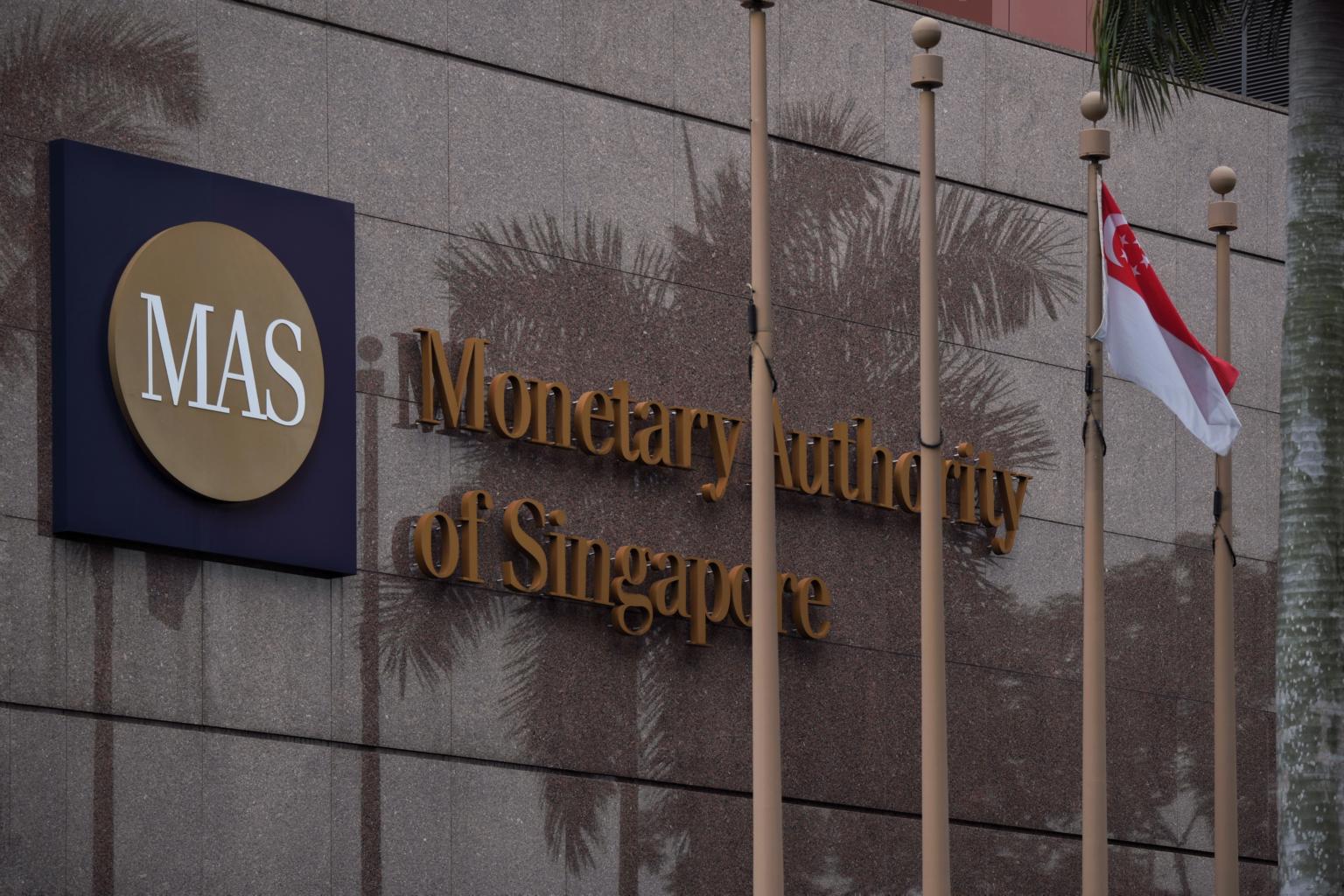MAS leaves Singdollar policy unchanged on recovery outlook
Sign up now: Get ST's newsletters delivered to your inbox

MAS' policy stance was in line with analysts' expectations.
ST PHOTO: KUA CHEE SIONG
Follow topic:
SINGAPORE - Singapore's central bank is holding steady on monetary policy while the Singapore economy recovers from the impact of the coronavirus pandemic, and has signalled that its accommodative stance will remain appropriate for some time.
As widely expected, the Monetary Authority of Singapore (MAS) left unchanged the Singapore dollar's rate of appreciation at zero per cent per annum of its policy band, the authority announced in its latest twice-yearly monetary policy review on Wednesday (Oct 14).
There will be no change to the width of the policy band and the level at which it is centred.
"The Singapore economy is expected to see a recovery in 2021, alongside receding disinflation risk. However, the underlying growth momentum will be weak, and the negative output gap will only narrow slowly in the year ahead," MAS said.
It added that an accommodative policy stance will remain appropriate for some time as core inflation is expected to stay low.
"This will complement fiscal policy efforts to mitigate the economic impact of Covid-19 and ensure price stability over the medium term."
OCBC Bank head of treasury research and strategy Selena Ling said that the overall tone of MAS' announcement is "basically status quo with a tinge of dovishness out into 2021".
A clearer picture next year of global and domestic economic recovery prospects and inflation might call for a reconsideration of the central bank's accommodative monetary policy stance, she noted.
Ms Ling added: "With MAS in wait-and-see mode, we expect short-term Singapore interest rates to also tread water around current ranges, with the three-month Sibor (Singapore Interbank Offered Rate) and SOR (Swap Offer Rate) anchored around 0.4 per cent and 0.18 per cent for the rest of this year."
Meanwhile, DBS strategists Philip Wee and Duncan Tan expect the Singapore dollar to trade lower at $1.38 against the United States currency by the end of this year as the US dollar strengthens.
"The S$NEER has kept close to the midpoint of the policy band since the last easing on March 30 to address the pandemic. This has kept the US dollar-Singapore dollar closely aligned to the peers of its major trade partners," they noted.
The Singapore dollar was barely changed after the announcement. It was up 0.04 per cent to $1.3596 against the US currency as at 9.35am on Wednesday.
The Singapore dollar was barely changed after the announcement. It was up 0.04 per cent to $1.3596 against the US currency as at 9.35am on Wednesday.
MAS' policy stance was in line with analysts' expectations. All 13 economists in a Reuters poll forecast that MAS would keep its policy settings unchanged on hopes that the economy will recover on further easing of Covid-19 restrictions and unprecedented Budget packages amounting to nearly $100 billion, with monetary policy playing a supportive role.
Singapore started a gradual reopening of the economy in June, sparking a steady recovery in economic activity.
Third-quarter gross domestic product flash data released also on Wednesday morning showed that the economy has moved past the trough of its worst-ever recession, with GDP rebounding by 7.9 per cent on a quarter-on-quarter seasonally adjusted basis in the July to September period. The rebound comes after the 13.2 per cent quarter-on-quarter plunge in the second quarter that included the April 7 to June 1 circuit breaker period.
On a year-on-year basis, the economy shrank by 7 per cent in the third quarter, less than the second quarter's 13.3 per cent contraction.
MAS also upgraded its 2020 forecast range for both core and overall inflation to -0.5 to 0 per cent. Its previous 2020 forecasts for both indicators were -1 per cent to 0 per cent.
It tips core inflation to come in next year at 0 to 1 per cent, while overall inflation is expected to be between -0.5 to 0.5 per cent.
MAS uses the Singapore dollar's nominal effective exchange rate (S$NEER) as its main policy tool rather than interest rates, because Singapore is a small and open economy with a heavy dependence on trade. The S$NEER is the exchange rate of the Singapore dollar managed against a trade-weighted basket of currencies of the nation's major trading partners. The S$NEER is allowed to float within an unspecified band. Should it go out of this band, MAS steps in by buying or selling Singdollars.
The central bank changes its monetary policy by adjusting the slope, width and midpoint of this band based on assessed risks to the country's growth and inflation.
It took the unprecedented step in its April review of both lowering the midpoint of its currency band and reducing the slope to zero. That meant it allowed for a weaker exchange rate to head off deflation and support Singapore's export-reliant economy as the nation braced for a deep recession.
Since that decision, the Singapore dollar has traded stronger in line with global trading partners amid signs of economic recovery. MAS said on Wednesday that the S$NEER has hovered slightly above the midpoint of the new policy band.
"The relative stability of the S$NEER has reflected the strengthening of the Singdollar against the US dollar, offset by its weakening against a number of regional currencies," it added.
Meanwhile, core inflation - a key consideration for MAS' monetary policy, which aims for price stability conducive to sustained economic growth - stayed negative for the seventh consecutive month in August but eased to minus 0.3 per cent.

